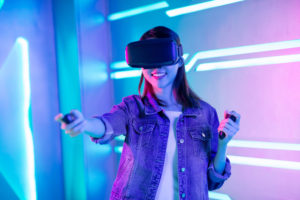
Researchers from the Smart-Aging Research Center (IDAC) have developed an innovative training protocol that they have used to help patients who are physically unable to walk. IVR allows for the creation of a realistic virtual world that can be explored with a virtual body. They have found the illusion is so convincing that even with the patient sitting still, with a virtual body walking, comparable physiological reactions are generated.
Physical exercise is crucial for overall well-being and can help to postpone aging-related disorders such as cognitive decline. Unfortunately, for some people, physical exercise is not always possible, so virtual reality training may offer some substantial mental health benefits.
For the study, professor Ryuta Kawashima, along with a team of researchers, set out to find if virtual training can have similar benefits on cognitive functions as physical exercise. Young, healthy participants were used to try the virtual training protocol. They were required to wear an IVR headset while sitting.
The display of the IVR showed them a virtual body (avatar) in the first-person perspective. This created the illusion of being the avatar itself. The activity alternated between 30 seconds of walking and 30 seconds of running for 8 minutes.
It was found that participants’ heart rate increased along with the virtual movements, despite the fact that subjects were completely still. Cognitive functions and their neural basis were tested before and after the virtual training. The results showed that participants improved their cognitive performance, which was confirmed by the increased activation of the brain-related areas. This was explicitly found in the left dorsolateral prefrontal cortex.
Not Just Entertainment
The developer of the experiment, Professor Dalila Burnin, said, “The application of immersive virtual reality for clinical purposes is often doubted because it was originally designed for entertainment. But this study proves that training protocols in IVR can be useful for people with motor impairments to have comparable benefits to real physical activity.”
This innovative way to use virtual technology in the cognitive neuroscience field may help researchers understand body representation and motor control, providing better treatments. Not only can it provide clinical solutions for patients, but it can also be a beneficial way for people to start exercising in an entertaining and safe way.